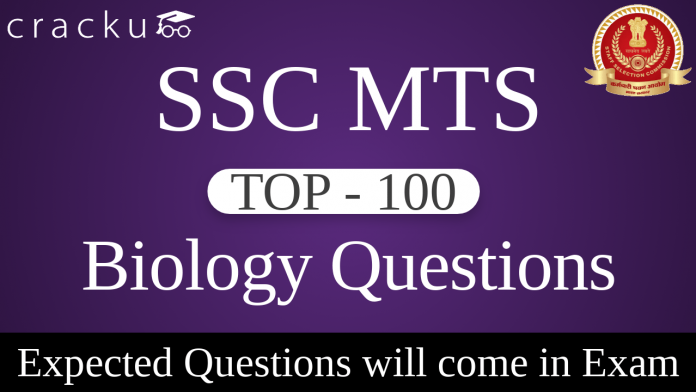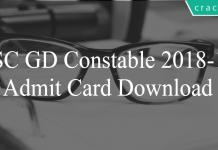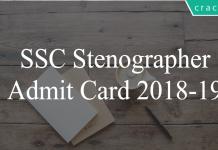Top-100 Expected SSC MTS & RRB NTPC Biology Questions PDF
Download Top-100 Expected Biology questions and answers for SSC MTS, RRB NTPC exam. Go through the video of Repeatedly asked and most important SSC MTS, RRB NTPC expected Biology questions. These questions are based on previous year SSC questions and other Govt exams.
Download SSC MTS & RRB NTPC Most Expected Biology Questions
Last Day – 10 SSC MTS Mocks for just Rs. 117
Download All SSC MTS Important Questions PDF
Take a free mock test for SSC MTS
Read this Post in Telugu
Question 1: What are the organisms that eat other organisms called?
a) Holotrophic organisms
b) Parasitic organisms
c) Chemotrophic organisms
d) Saprotrophic organisms
Question 2: Biogas is produced from biomass by:
a) destructive distillation
b) fractional distillation
c) anaerobic fermentation
d) dry distillation
Question 3: The filtration units in the human kidney are known as ………
a) nephrons
b) protons
c) neurons
d) neutrons
Question 4: Plants used for production of biofuel are :
a) Pongamia giabra
b) Jatropa curcas
c) Acacia melanoxylon
d) Azadirachta indica
Question 5: Fluid part of Blood after removal of Corpuscles is called :
a) Vaccine
b) Lymph
c) Serum
d) Plasma
SSC MTS Previous Papers Download PDF
Question 6: How is the tissue between the top and bottom of the bipolar is called tissue?
a) Endodermis
b) Mesophyll
c) Injector (Pith)
d) Vascular System
Question 7: Fertilisation occurs in the ……….
a) Vagina
b) Uterus
c) Fallopian tube
d) Cervix
Question 8: Nodes of Ranvier are microscopic gaps found within:
Top-100 Expected SSC MTS Biology Questions PDFa) osteoblasts
b) gland cells
c) chondroblasts
d) myelinated axons
Question 9: Muscle contains special proteins called …………
a) lipoproteins
b) contractile proteins
c) glycol-proteins
d) nucleoproteins
Question 10: In which of the flowering plants are buds produced in the notches along the leaf margin?
a) Bryophyta
b) Banana
c) Rose
d) Bryophyllum
Question 11: The spinal cord originates from:
a) Cerebellum
b) Medulla
c) Pons
d) Cerebrum
Question 12: What is a tissue?
a) Cells which are similar in origin, but dissimilar in form and function
b) Cells which are dissimilar in origin, but are similar in form and function
c) Cells whichare dissimilar in origin, form and function
d) Cells whichare similar in origin, form and function
Last Day – 10 SSC MTS Mocks for just Rs. 117
Question 13: What is the straight tube, about 40 cm long, that carries sperms to the seminal vesicles, called?
a) Urethra
b) Penis
c) Vas deferens
d) Scrotum
Question 14: Tooth decay starts when the pH of the mouth is lower than:
a) 5.7
b) 5.5
c) 5.6
d) 5.4
Question 15: ……… cells are embedded in a hard matrix that is composed of calcium and phosphorus.
a) Ligament
b) Blood
c) Bone
d) Cartilage
Question 16: What are the receptors for detecting taste called?
a) Sensory receptors
b) Chemical receptors
c) Olfactory receptors
d) Gustatory receptors
Question 17: …….. meristem is present at the base of the leaves or internodes on twigs.
a) Calary
b) Intercalary
c) Apical
d) Lateral
Question 18: Plants that do not have a differentiated plant body belong to the group ……….
a) Bryophyta
b) Phanerogams
c) Thallophyta
d) Pteridophyta
Question 19: Asexual reproduction differs from sexual reproduction in that in asexual reproduction, ………….
a) the new organisms are genetically identical to the parent
b) the gametes are produced in reproduction
c) the nuclei of gametes fuse
d) the offspring shows variations
Question 20: The main cause of rancidity in foods is the ……… of fats and oils.
a) hydrolysis
b) clarification
c) reduction
d) oxidation
Question 21: The girth of the stem or root in plants increases due to:
a) Apical meristem
b) Lateral meristem
c) Intercalary meristem
d) Extra meristem
Question 22: Which of the following acids is present in Red Ants?
a) Malic acid
b) Formic acid
c) Tannic acid
d) Oxalic acid
Question 23: In plants, the carbohydrates which are NOT used immediately are stored in the form of:
a) Amino acids
b) Starch
c) Fatty acids
d) Fats
Question 24: The process of taking up a permanent shape, size and function to form a permanent tissue is called:
a) formation
b) differentiation
c) unification
d) calcification
Question 25: The embryo gets nutrition from the mother’s blood with the help of a special tissue called:
a) Uterus
b) Placenta
c) Cervix
d) Fallopian tube
Download General Science Notes for SSC Exams PDF
Question 26: Plants bend towards light due to the diffusion of the ……….. hormoneon the other side of the shoot.
a) abscisic acid
b) auxin
c) cytokinin
d) gibberellin
Question 27: In which of the following tissues are the cells living, elongated and irregularly thickened
at the corners?
a) Parenchyma
b) Sclerenchyma
c) Aerenchyma
d) Collenchyma
Question 28: What is the name of the point at which the chromatids are attached in a chromosome?
a) Centrosome
b) Centromere
c) Nucleosome
d) Gene
Question 29: Hydra reproduces by:
a) Fragmentation
b) Multiple fission
c) Budding
d) Binary fission
Question 30: Name the stage of mitosis during which the chromosomes of a dividing cell lies at the
equatorial plate?
a) Anaphase
b) Telophase
c) Metaphase
d) Prophase
Question 31: Which of the following is the main thinking part of the human brain?
a) Hind- brain
b) Cerebellum
c) Mid-brain
d) Fore-brain
Question 32: In sexual reproduction a parent contributes:
a) Half of their genes
b) Three-fourth of their genes
c) All the genes
d) One-fourth of their genes
Question 33: Implantation is the process of:
a) the development of a child inside the mother’s body
b) attachment of zygote to the lining of a uterus
c) nutrition from mother’s blood through placenta
d) developing an embryoand its nourishment
Question 34: What are the products formed during photosynthesis?
a) Glucose, Water and Oxygen
b) Glucose and Oxygen
c) Starch and Oxygen
d) Starch, Water and Oxygen
Question 35: Some of the energy derived from the food we eat is stored in the form of:
a) Amino acids
b) Pyruvic acid
c) Glucose
d) Glycogen
Question 36: Involuntary actions in human beings such as blood pressure, salivation and vomiting are controlled by the:
a) Spinal cord
b) Hypothalamus
c) Pons
d) Medulla
Question 37: A fungal cell wall is made of:
a) lignin
b) hemi-cellulose
c) chitin
d) cellulose
Question 38: Which of the following type of medicine is used to treat indigestion?
a) Sulpha drug
b) Antihistamine
c) Antibiotic
d) Antacid
Question 39: Phytohormones are:
a) substances controlling diseases
b) regulators synthesised by plants influencing physiological processes
c) substances used for photosynthesis
d) chemicals used for peeling
Question 40: Which of the following plant tissues is capable of cell division?
a) Parenchyma
b) Sclerenchyma
c) Meristem
d) Xylem
Question 41: Which component of the blood transports food, $CO_2$ and nitrogenous waste?
a) WBCs
b) Blood platelets
c) RBCs
d) Plasma
Last Day – 10 SSC MTS Mocks for just Rs. 117
Question 42: The female reproductive part of a flower is called:
a) Petals
b) Sepals
c) Carpel
d) Stamens
Question 43: The motile germ cell is called a/an:
a) Male gamete
b) Gamete
c) Female gamete
d) Isogamete
Question 44: Name the vitamin whose deficiency causes excessive bleeding?
a) Vitamin A
b) Vitamin B
c) Vitamin K
d) Vitamin C
Question 45: The essential organs in a flower for reproduction are:
a) the stamen and pistil
b) the sepal and stamen
c) the sepal and petal
d) the petal and pistil
Question 46: Amphibian plants are placed in which of the following groups?
a) Bryophyta
b) Gymnosperms
c) Pteridophyta
d) Thallophyta
Question 47: Which permanent tissue makes a plant hard and stiff?
a) Parenchyma
b) Aerenchyma
c) Collenchymas
d) Sclerenchma
Question 48: In a plant, which of the following is converted into seed?
a) ovule
b) ovary
c) style
d) stigma
Question 49: Growth hormones function:
a) sometimes as growth promotors and sometimes as growth inhibitors
b) always as growth inhibitors
c) rarely as growth promotors
d) always as growth promotors
Question 50: The human body works with in the pH range of:
a) 6.0 to 7.0
b) 6.0 to 6.8
c) 7.0 to 8.6
d) 7.0 to 7.8
Question 51: Dwarfness can be controlled by treating plants with:
a) Gibberellic acid
b) Cytokinin
c) Ethylene
d) Auxin
Question 52: The egg is carried from the ovary to the womb through:
a) the uterus
b) the vas deferens
c) the oviduct
d) the cervix
Question 53: …….. are the carriers of heredity material.
a) Genetics
b) Genes
c) Gametes
d) Germ cells
Question 54: The reproductive parts of a flower are:
a) Calyx and carpels
b) Calyx and corolla
c) Corolla and stamens
d) Stamensand carpels
Question 55: The ……. has abundant white fibres.
a) cartilage
b) ligament
c) tendon
d) bone
Question 56: Syngamy is defined as:
a) the fission of one egg
b) the fusion of one of the sperms with the synergid
c) the fission of one sperm
d) the fusion of one of the spermswith the egg
Question 57: Which of the following is necessary to maintain the number of individuals of species and to prevent their extinction?
a) Digestion
b) Circulation
c) Respiration
d) Reproduction
Question 58: The universal natural auxin of plants is:
a) IBA
b) citric auxin
c) NAA
d) IAA (Indole 3-acetic acid)
Question 59: The sensation of sound persists in the human brain for about:
a) 0.5 sec
b) 0.2 sec
c) 0.1 sec
d) 1 sec
Question 60: Parthenocarpy is defined as:
a) Development of root without fertilisation
b) Development of fruit without fertilisation
c) Development of fruit with fertilisation
d) Development of root with fertilisation
18000+ Questions – Free SSC Study Material
Question 61: Which type of reproduction allows for greater variation to be generated?
a) Sexual reproduction
b) Asexual reproduction
c) Binary fission
d) Multiple fission
Question 62: The energy released at the end of digestion is in the form of:
a) thermal energy
b) electric energy
c) kinetic energy
d) chemical energy
Question 63: _____ , found in blood, is responsible for oxygen transportation.
a) WBC
b) Plasma
c) Platelets
d) RBC
Question 64: Reproducing new plants bycells instead of vegetative parts or seeds is called:
a) tissue culture
b) regeneration
c) multiple fission
d) binary fission
Question 65: Complete digestion of carbohydrates, proteins and fats takes place in the:
a) Oesophagus
b) Stomach
c) Small intestine
d) Large intestine
Question 66: The …….. is responsible for precision of voluntary actions and for maintaining the
posture and balance of the body.
a) Mid-brain
b) Cerebellum
c) Cerebrum
d) Spinal cord
Question 67: Name the organ where the embryo develops:
a) Ureter
b) Uterus
c) Cervix
d) Fallopian tube
Question 68: Which cell organelle is called the Master of the Cell?
a) Endoplasmic reticulum
b) Mitochondria
c) Nucleolus
d) Nucleus
Question 69: Pollen grains are found in:
a) stigma
b) ovules
c) anthers
d) locule
Question 70: Which of the following is used in the preparartion of vinegar ?
a) Methanol
b) Acetic acid
c) Ethanol
d) Ethanoic acid
Question 71: ……… tissue changes the diameter of a blood vessel.
a) Heart
b) Muscle
c) Epithelial
d) Bone
Question 72: In human beings, the respiratory pigment is:
a) Chlorophyll
b) Melanin
c) Rhodopsin
d) Haemoglobin
Question 73: The first photosynthetic oxygen liberating organisms to appear on earth were:
a) Cyanobacteria
b) Bacteria
c) Bryophytes
d) Green algae
Question 74: Which of the following organelles are called the Protein Factories of the cell?
a) Mitochondria
b) Ribosomes
c) Lysosomes
d) Chloroplasts
Question 75: ……. is concerned with cell division.
a) Cytokinin
b) Gibberellin
c) Maleic hydrazide
d) Auxins
Question 76: The breakdown of glucose to pyruvate takes place in the …….. during energy production.
a) cytoplasm
b) mitochondria
c) nucleus
d) endoplasmic reticulum
Question 77: Fertilisation results in the formation of a/an:
a) Ovary
b) Zygote
c) Gamete
d) Germ cell
Question 78: The organs that have the same basic structure (or same basic design) but different functions are called:
a) homologous organs
b) biogenetic law
c) analogous organs
d) fossils
Question 79: A section of DNA that provides information for one protein is called the ……….
a) lysosome
b) gene
c) chromosome
d) nucleus
Question 80: Which part of the brain regulates breathing?
a) Cerebellum
b) Medulla
c) Fore-brain
d) Mid-brain
Question 81: Primary growth in plants occurs by:
A. Vertical meristem
B. Lateral meristem
C. Intercalary meristem
D. Apical meristem
a) C and D
b) A,B and D
c) A, B, C and D
d) B, C and D
Question 82: ______ is the branch of Biology which is concerned with the study of structure of organism and their parts.
a) Chronobiology
b) Ecology
c) Mycology
d) Anatomy
Question 83: The total number of living organisms, both plants and animals, in a given area is called:
a) barrage
b) batholith
c) buffers
d) biomass
Question 84: …….. is the liquid part of the blood of which 92% is water and the remaining 8% is
proteins, minerals, hormones, enzymes, and so on.
a) RBC
b) Plasma
c) Blood platelet
d) WBC
Question 85: When large quantities of ………. are consumed,it tends to slow metabolic processes and
to depress the central nervous system.
a) Butanol
b) Propanol
c) Methanol
d) Ethanol
Question 86: …….., present in the centre of a flower, forms the female reproductive part.
a) Sepals
b) Petals
c) Carpels
d) Stamens
Question 87: The total number of living organisms, both plants and animals, in a given area is called:
a) barrage
b) batholith
c) buffers
d) biomass
Question 88: Rickets is caused due to the deficiency of:
a) Vitamin D
b) Vitamin A
c) Vitamin B
d) Vitamin C
Question 89: A tendon is made up of:
a) inelastic connective tissue fibres
b) inelastic and elastic connective tissue fibres
c) only collagen fibres
d) elastic connective tissue fibres
Question 90: What is the process of production of ovum in the females called?
a) Adolescence
b) Menarche
c) Oogenesis
d) Menstruation
SSC MTS Previous Papers Download PDF
Question 91: Mushrooms and other micro organisms feed on dead plant and animal tissues and convert them into ………..
a) Sod
b) Peat
c) Clod
d) Humus
Question 92: During photosynthesis, green plants use energy from sunlight to synthesise _____ from carbon dioxide and water
a) fructose
b) sucrose
c) galactose
d) glucose
Question 93: What is the movement of a plant due to the stimulus of light known as?
a) Respiration
b) Geotaxis
c) Geotropism
d) Phototropism
Question 94: Which non-nucleated cells in plants transport nutrients?
a) Sieve cells
b) Guard cells
c) Transfer cells
d) Epidermal cells
Question 95: The directional growth movement in plants due to touch is called ……….
a) thigmonasty
b) geotropism
c) phototropism
d) chemotropism
Question 96: Where is Rhodopsin, also called visual purple, located in the human body?
a) Eye
b) Hair
c) Nail
d) Hand
Question 97: Which human body part can be called the ‘chemical factory’ of our body?
a) Liver
b) Stomach
c) Kidneys
d) Lungs
Question 98: Humans normally have …….. number of pairs of autosomes,
a) 10
b) 21
c) 20
d) 22
Question 99: Which of the following in the human body is popularly called the Adam’s apple ?
a) Adrenal
b) Liver
c) Thyroid
d) Thymus
Question 100: Turpentine oil is obtained from:
a) Eucalyptus tree
b) Animal fat
c) Pine Tree
d) None of these
1500+ Free SSC Questions & Answers
Answers & Solutions:
1) Answer (A)
2) Answer (C)
3) Answer (A)
4) Answer (B)
5) Answer (C)
6) Answer (B)
7) Answer (C)
8) Answer (D)
9) Answer (B)
10) Answer (D)
11) Answer (B)
12) Answer (D)
13) Answer (C)
14) Answer (B)
15) Answer (C)
16) Answer (D)
17) Answer (B)
18) Answer (C)
19) Answer (A)
20) Answer (D)
21) Answer (B)
22) Answer (B)
23) Answer (B)
24) Answer (B)
25) Answer (B)
26) Answer (B)
27) Answer (D)
28) Answer (B)
29) Answer (C)
30) Answer (C)
31) Answer (D)
32) Answer (A)
33) Answer (B)
34) Answer (A)
35) Answer (D)
36) Answer (D)
37) Answer (C)
38) Answer (D)
39) Answer (C)
40) Answer (C)
41) Answer (D)
42) Answer (C)
43) Answer (A)
44) Answer (C)
45) Answer (A)
46) Answer (A)
47) Answer (D)
48) Answer (A)
49) Answer (A)
50) Answer (D)
Download General Science Notes PDF
51) Answer (A)
52) Answer (C)
53) Answer (B)
54) Answer (D)
55) Answer (C)
56) Answer (D)
57) Answer (D)
58) Answer (D)
59) Answer (C)
60) Answer (B)
61) Answer (A)
62) Answer (D)
63) Answer (D)
64) Answer (A)
65) Answer (C)
66) Answer (B)
67) Answer (B)
68) Answer (D)
69) Answer (C)
70) Answer (B)
71) Answer (B)
72) Answer (D)
73) Answer (A)
74) Answer (B)
75) Answer (A)
76) Answer (A)
77) Answer (B)
78) Answer (A)
79) Answer (B)
80) Answer (B)
81) Answer (A)
82) Answer (D)
83) Answer (D)
84) Answer (B)
85) Answer (D)
86) Answer (C)
87) Answer (D)
88) Answer (A)
89) Answer (C)
90) Answer (C)
91) Answer (D)
92) Answer (D)
93) Answer (D)
94) Answer (A)
95) Answer (A)
96) Answer (A)
97) Answer (A)
98) Answer (D)
99) Answer (C)
100) Answer (C)
DOWNLOAD APP FOR SSC MTS FREE MOCKS
We hope this very important SSC MTS Expected Biology Questions will be very helpful.





